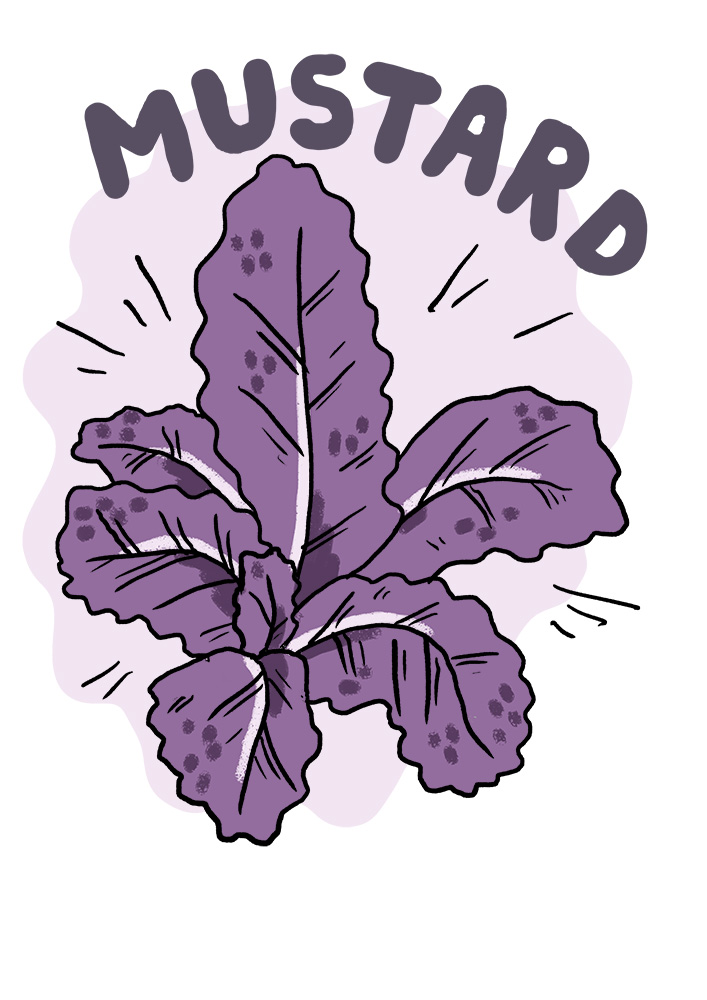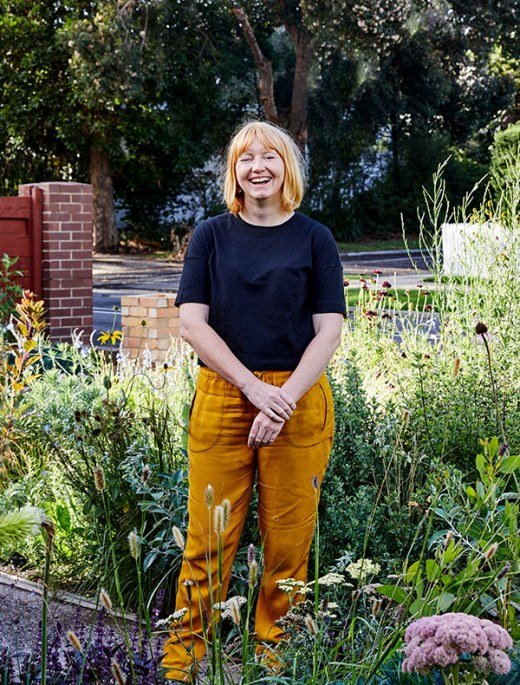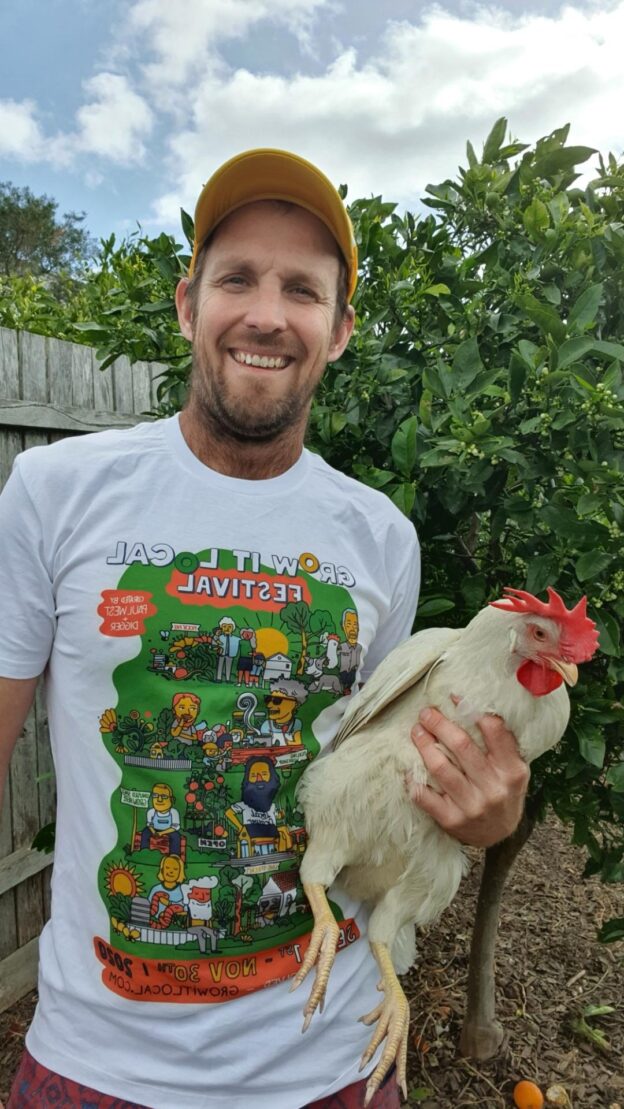Learn > How To
How to Grow Giant Red Mustard
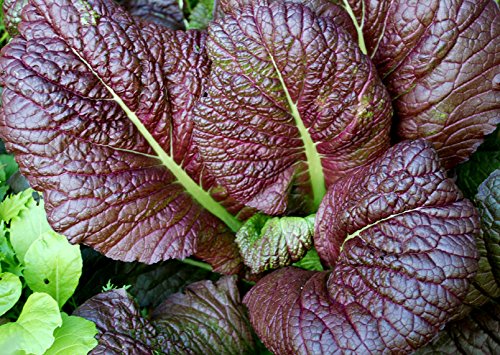
Giant Red Mustard is a large, leafy vegetable which may reach up to 90cm in height. The leaf colour is striking and the rich red- purple, deeply textured leaves are contrasted by the bright green of the central vein. The leaves are tender and succulent, while the stems are crunchy. Mustard greens play an important part of Chinese and Indian cuisines and are usually harvested when fully mature when they offer a bold and robust flavour. The flavour of giant red mustard is similar to horse radish. For a milder flavour harvest younger leaves.
ORIGINS
Mustard greens have been consumed for over 5,000 years and are widely believed to have originated from the Himalayan region of India.
Today, it is common to find mustard greens throughout Europe, Northern Africa, India, and Asia, as well as North America and the Pacific.
All varieties of mustard come from the come from the Cruciferae family which is a large family of plants with four-petaled flowers including mustards, cabbages, broccoli, turnips, cresses, and their many relatives.
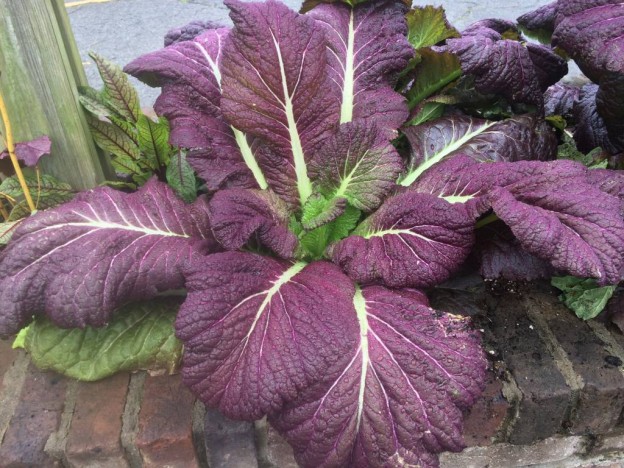
Health and nutritional information
Mustard greens are packed with fiber, vitamins, minerals and protective antioxidants, including glucosinolates and polyphenols, yet because of their slimming calorie count, mustard greens nutrition-to-calorie ratio makes them one of the most nutrient-dense foods on the planet
It has been reported that three servings of this green leafy vegetable every single day might help reduce the loss of mental function by 40 %.
Mustard greens are rich in vitamin A, C and K which promote positive eye and heart health, anti-cancerous and possess immune-boosting properties. They are believed to further provide positive benefit from with health conditions such as heart disease, diabetes and even certain types of cancer.
How are mustard greens good for you?
· Vitamin A present in it is extremely important for eye health. Without sufficient amount of vitamin A eyes cannot produce sufficient moisture to help keep them properly lubricated. Vitamin A also assists with flushing toxins from your body and cleanses the system by the virtue of its antioxidant properties.
· Vitamin B-carotene present in the mustard is quite helpful in reducing the risk of death from cardiovascular diseases.
· Mustard contains sufficient amount of Vit K that is considered wonderful in reducing the risk of prostate, colon, stomach, nasal and oral cancers.
· It is extremely beneficial for the pregnant women as it contains Vit K in a large quantity. Pregnant women suffering from nausea and vomiting is usually due to the deficiency of Vit K in the body. This Vit K intake will show good results by providing relief in less than seventy two hours thus preventing mild form of these symptoms in future.
Being the super vegetable that they are mustard greens also;
· help prevent arthritis, fight off cold and flu
· provide a rich source of antioxidants
· play a role in reducing in blood clotting by removing calcium from areas of our body where it should not be present. It helps in supporting our brain, maintaining a healthy metabolism a providing a shield against cancer.
· helps to heal bruises
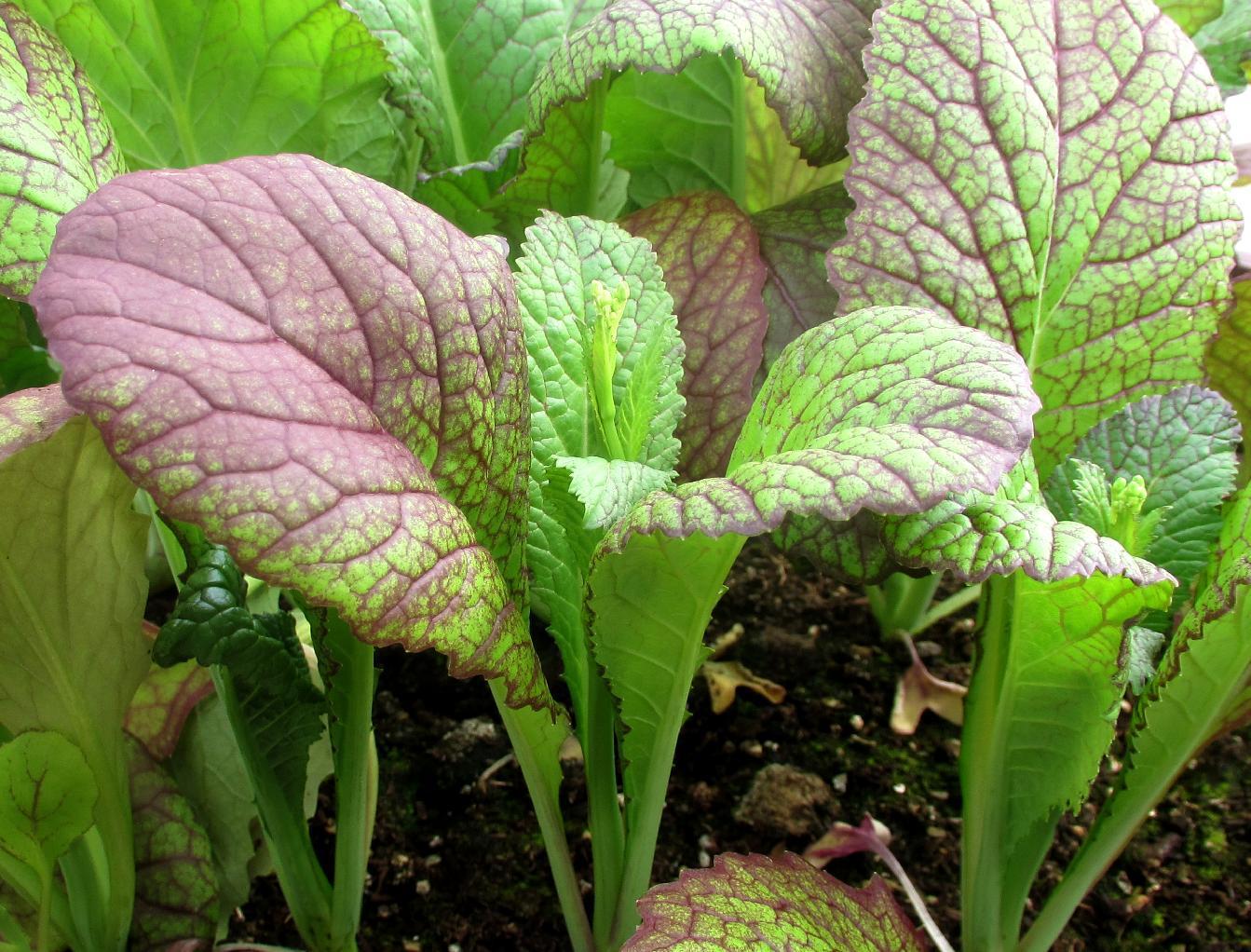
HOW TO PLANT MUSTARD SEEDS
Mustard – giant red is an annual, fast growing, cool-season, nutritious, leafy green vegetable that can tolerate light frosts and can be grown all year round in most parts of Australia. It prefers cooler seasons (Autumn and Winter) and a location that receives
6 hours of sun to grow to maximum potential. However, mustard – giant red produces only leaves and not fruit, it is more tolerant of shade than fruiting vegetables like tomatoes.
Mustard will grow well in most soils, but will produce the best outcomes in rich, well-drained, well-prepared soil with a pH of no less than 6.0.
Mustard seeds generally take eight to ten days to germinate if placed under the proper conditions, which include a cold atmosphere and relatively moist soil. It will thrive if given constant moisture.
Mature mustard plants grow into shrubs.
Sow mustard seeds them a 2cm deep and 4cm apart, in rows 12cm to 16cm apart.
Harvesting is possible all year in the right climate, with seeds best planted in spring and autumn when it is not too hot or too cold. Giant Red Mustard may be harvested 6-8 weeks from planting. It is slow to bolt, which is beneficial in warm regions.
MUSIC TO GROW TO
Feel the soul with Otis Redding’s ‘Hard To Handle’. Yes!
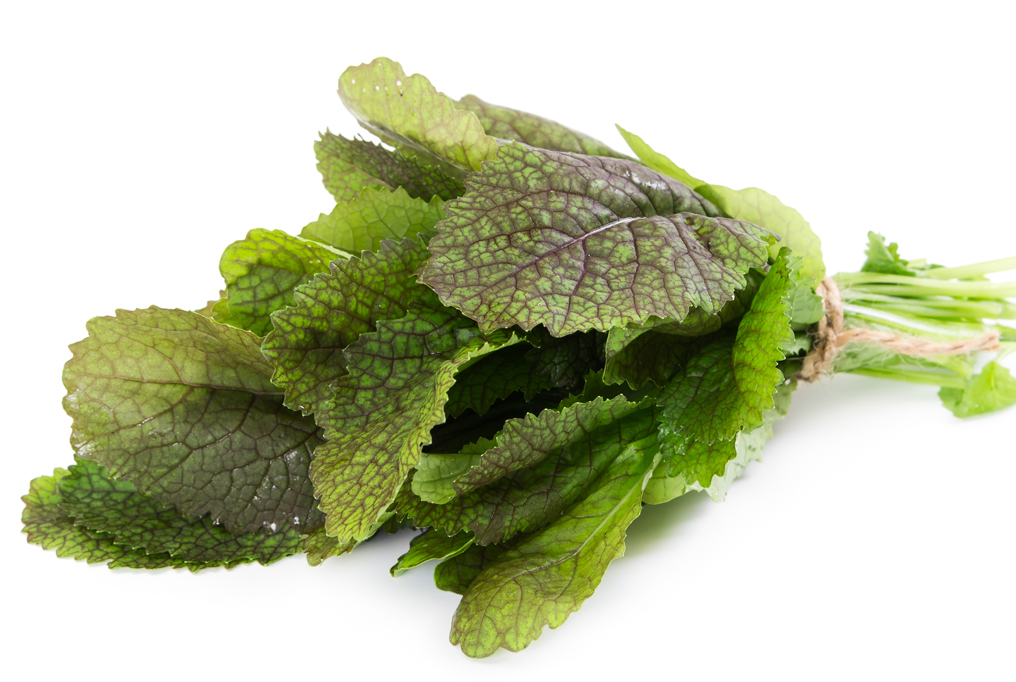

USE IT ALL
Leaves, seeds and the stems of the mustard variety are edible (Zohray et al., 2012).
Mustard in all its forms—shoots, leaves, flowers, whole seed, powdered, or prepared—is a flavorful, low-fat way to punch up any savory food.
For a milder taste, harvest young leaves at about 15cm in length. Prior to use, the leaves can be immersed in water for 5 minutes after picking them, in order to allow them to ‘plump up.’
MUSTARD GREENS RECIPE
Ingredients
- 1/2 cup thinly sliced onions
- 2 cloves garlic, minced
- 1 tablespoon extra virgin olive oil
- 1 pound mustard greens, washed and torn into large pieces
- 2 to 3 tablespoons chicken broth or vegetable broth (vegetarian option)
- 1/4 teaspoon salt
- 1/4 teaspoon pepper
- 1/4 teaspoon dark sesame oil
Method
Sauté onions, garlic:
In a large sauté pan, sauté onions in olive oil over medium heat until the onions begin to brown and caramelize, about 5 to 10 minutes.
Add the minced garlic and cook a minute more, until fragrant.
Add the greens:
Add the mustard greens and broth. Cook until the mustard greens are just barely wilted.
Finish and serve:
Toss the greens with sesame oil and season with salt and pepper
